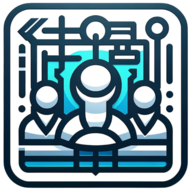Welcome to a deep dive into the world of user experience (UX) design. This post will explore the latest trends that are shaping the industry. From the rise of voice user interfaces to the importance of inclusive design, we will uncover the most influential movements in UX design today. Join us as we navigate through these exciting developments and discuss their impact on the digital landscape.
The Rise of Voice User Interfaces
Voice user interfaces (VUIs) are becoming increasingly popular. They offer a unique, hands-free way of interacting with digital devices. VUIs are not just a trend; they are a significant shift in the way we interact with technology.
The popularity of voice assistants like Amazon's Alexa, Google Home, and Apple's Siri has paved the way for this trend. These tools have made it easier for users to engage with their devices without needing to use their hands. This hands-free interaction is particularly useful when users are multitasking or when their hands are occupied.
The rise of VUIs has significant implications for UX design. Designers must now consider how to create experiences that are not just visually appealing but also audibly engaging. This shift requires a new set of design principles and techniques. For example, designers need to consider how to create clear and concise voice prompts. They also need to think about how to handle errors and misunderstandings that may arise during voice interactions.
The Importance of Inclusive Design
Inclusive design is another significant trend in UX design. It emphasizes the need to create products that are accessible and usable by as many people as possible. This approach goes beyond just meeting accessibility standards. It involves designing products that are inclusive from the ground up.
Inclusive design is not just about accommodating users with disabilities. It's about considering the full range of human diversity. This includes factors like age, gender, ethnicity, and socioeconomic status. By considering these factors, designers can create products that are truly inclusive.
Inclusive design has several benefits. It can help companies reach a broader audience and improve customer satisfaction. It can also lead to more innovative solutions. By considering a diverse range of user needs and perspectives, designers can come up with creative solutions that may not have been apparent otherwise.
The Emergence of Augmented Reality
Augmented reality (AR) is another trend that is shaping the UX design landscape. AR involves overlaying digital information onto the real world. This technology can create immersive experiences that blur the line between the physical and digital worlds.
AR has several applications in UX design. For example, it can be used to provide real-time information in a user's environment. It can also be used to create interactive experiences that engage users in new ways.
The rise of AR has implications for UX design. Designers need to consider how to create experiences that seamlessly blend the digital and physical worlds. They also need to think about how to design for different types of AR devices, from smartphones to AR glasses.
The Shift Towards Minimalist Design
Minimalist design is a trend that has been gaining traction in the UX design world. This approach emphasizes simplicity and clarity. It involves stripping away unnecessary elements and focusing on the essentials.
Minimalist design can improve usability by reducing clutter and making it easier for users to understand and interact with a product. It can also create a more aesthetically pleasing experience.
The shift towards minimalist design has implications for UX designers. They need to consider how to create experiences that are simple yet effective. They also need to think about how to balance simplicity with functionality.
The Role of Artificial Intelligence in UX Design
Artificial intelligence (AI) is another trend that is shaping the UX design landscape. AI involves using machines to mimic human intelligence. This technology can be used to create more personalized and efficient user experiences.
AI has several applications in UX design. For example, it can be used to create personalized recommendations based on a user's behavior. It can also be used to automate tasks and make processes more efficient.
The rise of AI has implications for UX design. Designers need to consider how to integrate AI into their designs in a way that enhances the user experience. They also need to think about how to design for transparency and trust, as users may have concerns about how AI is using their data.
The Impact of Microinteractions
Microinteractions are another trend that is influencing UX design. Microinteractions are small, subtle interactions that occur when a user interacts with a product. They can be used to guide users, provide feedback, or add a touch of delight to the user experience.
Microinteractions can have a big impact on the user experience. They can make a product more engaging and enjoyable to use. They can also improve usability by providing clear feedback and guiding users through a process.
The rise of microinteractions has implications for UX designers. They need to consider how to incorporate microinteractions into their designs in a way that enhances the user experience. They also need to think about how to design microinteractions that are subtle yet effective.
Wrapping Up the Current UX Design Trends
The world of UX design is constantly evolving, with new trends emerging all the time. From the rise of voice user interfaces to the importance of inclusive design, these trends are shaping the way we interact with digital products. As we move forward, it will be exciting to see how these trends continue to evolve and influence the UX design landscape.

